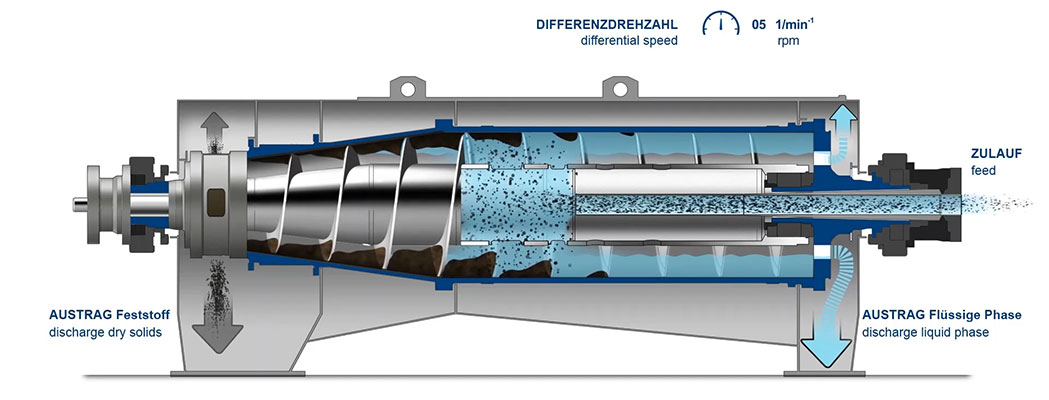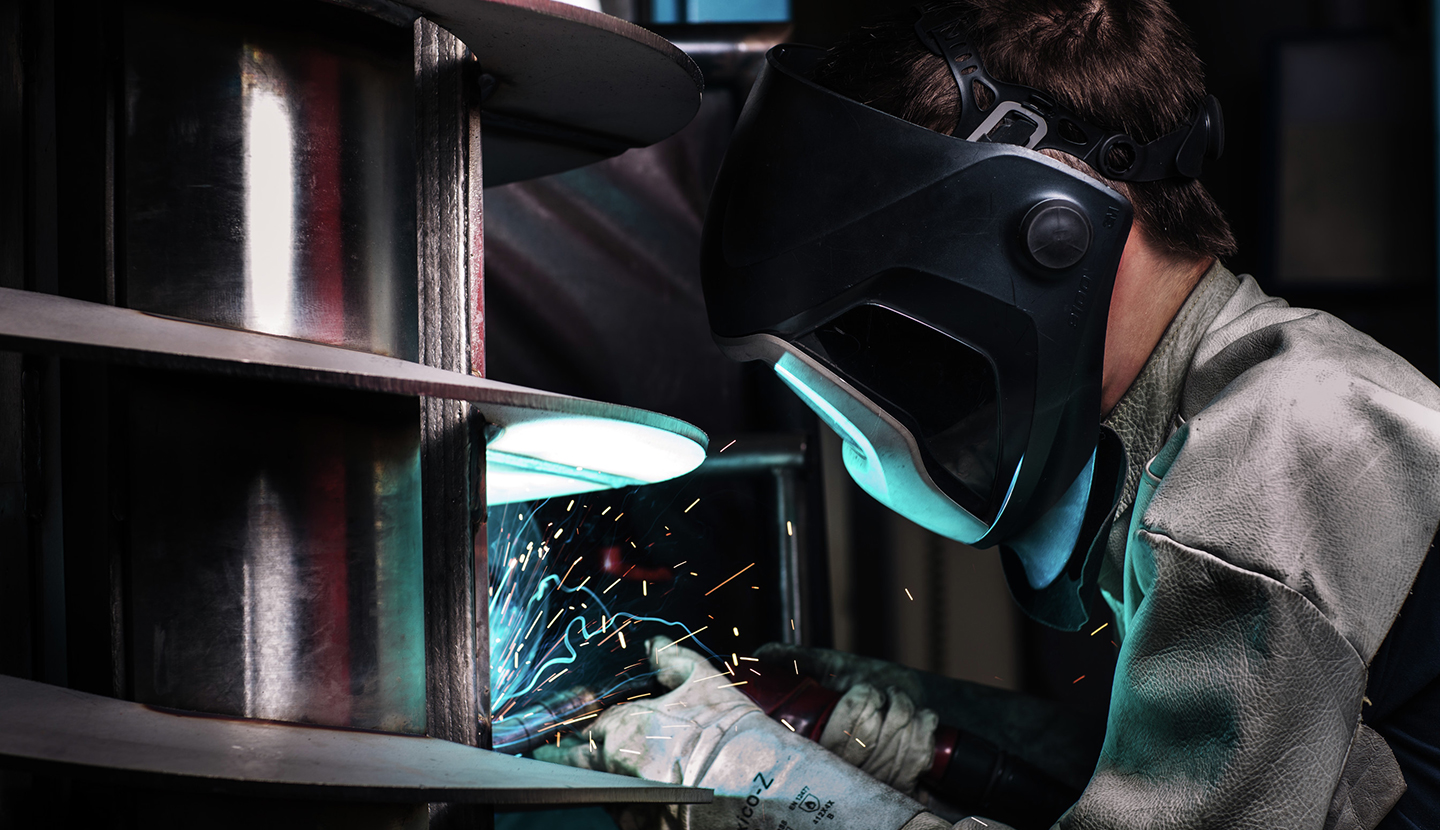- Highly efficient separation thanks to advanced separation solutions
- Customized bowl and screw geometry for optimal separation results
- Precise control of solids concentration for maximum operational flexibility
Economical, efficient, comfortable
Discover how a Decanter Centrifuge works with Flottweg’s innovative technology. Our Decanter uses centrifugal acceleration for optimum dewatering, efficiently separating solid and liquid phases. With automatic adjustment and ideal retention time, we ensure the best possible separation result. The system includes a decanter scroll and bowl, impeller (skimmer), and a centrally arranged feed pipe, making it economical, efficient, and comfortable to use. Experience the functionality of Flottweg’s Decanter today. Contact us to learn more!
A decanter can be regarded as a sedimentation tank that is wound around an axis. In the sedimentation tank, the solid particles, which are heavier than the liquid, move to the bottom by gravity and form a sediment (solid phase) at the bottom of the tank. For example, a wine decanter can be understood as a kind of sediment vessel. In a centrifuge, the solid and liquid phases are separated by means of centrifugal acceleration. In the rotating bowl of the centrifuge, the solid particles, which have a higher density and are therefore heavier than the liquid, move outwards because of centrifugal force. The sediment is formed on the inner wall of the centrifuge bowl. Since centrifugal forces of approximately 3000 g are exerted in a centrifuge as opposed to 1 g in a gravitational field, the separation of the solid particles from the liquid is much faster and more efficient.
Decanter inlet
The product is fed into the inlet chamber of the decanter scroll through the centrally arranged feed pipe. From there, after gentle pre-acceleration, it passes through the distributor openings into the decanter bowl.
 The product enters the decanter bowl via the distributor and settles against the bowl inner wall.
The product enters the decanter bowl via the distributor and settles against the bowl inner wall.
Decanter bowl
The decanter bowl has a cylindrical/conical shape and rotates at a pre-set speed optimally adjusted to the application. The slurry rotates within the bowl at the operating speed and forms a cylindrical layer at the bowl wall. Due to the higher density, the solids contained in the product settle on the inner wall of the bowl under the action of centrifugal force. The length of the cylindrical bowl section and the cone angle are selected to meet the specific requirements of an application.
 The decanter scroll conveys the settled solids in the direction of solids discharge.
The decanter scroll conveys the settled solids in the direction of solids discharge.
The decanter scroll
The decanter scroll rotates at a slightly different speed than the bowl and conveys the separated solids toward the conical end of the bowl. This differential speed determines the residence time of the solids in the decanter bowl. Residence time is a critical factor for cake dryness. It can be adjusted by changing the differential speed of the scroll thus providing optimal separation. Depending on the application and task, the scrolls are designed differently.
Solids discharge
Settled solids are ejected through ports at the conical end of the bowl into the solids housing and fall through the discharge chute.
Overflow weir
The clarified liquids (fluid phase) flow to the cylindrical end of the bowl where they exit over weir plates. In these openings there are very precisely adjustable weir plates (overflow weirs) with which the pond depth (liquid layer) in the bowl is adjusted. The liquid is collected in the drain housing and discharged without pressure.
Impeller (skimmer)
As an alternative to the overflow weir, the clarified liquid can also be discharged via an impeller and discharged from the bowl under pressure in a closed system. This eliminates the need for a separate chamber pump. A further developed variant, the adjustable impeller, allows infinitely variable adjustment of the pond depth during the run. This allows a fast and fine adjustment to changed conditions without having to take the Flottweg centrifuge out of operation.

